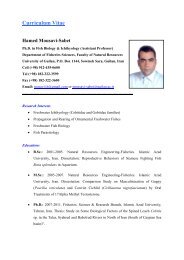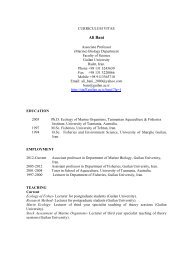Medical Tourism in Developing Countries
Medical Tourism in Developing Countries
Medical Tourism in Developing Countries
- No tags were found...
Create successful ePaper yourself
Turn your PDF publications into a flip-book with our unique Google optimized e-Paper software.
Promot<strong>in</strong>g <strong>Medical</strong> <strong>Tourism</strong> ● 151law, is to ensure that the f<strong>in</strong>al word <strong>in</strong> teleradiology goes to theU.S. accredited doctor. 40 In the United States, there is the U.S. <strong>Medical</strong>Licens<strong>in</strong>g Exam (USMLE) for doctors, and the National CouncilLicensure Exam<strong>in</strong>ation for Registered Nurses (NCLEX-RN). In Thailand’sBumrundgrad Hospital, the over 200 surgeons are all board-certified <strong>in</strong> theUnited States. In Lebanon, the Council for National Health <strong>Tourism</strong> hascollected statistics on the tra<strong>in</strong><strong>in</strong>g of the country’s physicians, especiallyperta<strong>in</strong><strong>in</strong>g to specializations that have taken place <strong>in</strong> European and NorthAmerican universities and that can be used to signal quality to potentialpatients. 41Obstacle III: Insurance<strong>Medical</strong> tourism <strong>in</strong> develop<strong>in</strong>g countries has taken off despite fac<strong>in</strong>g anunorganized demand based largely on cash transactions and word of mouth.The expansion of medical tourism would be several orders of magnitudegreater if source-country health <strong>in</strong>surances extended their coverage to<strong>in</strong>clude medical services outside the country. If <strong>in</strong>surance were portable,demand for medical tourism would undoubtedly expand. This has beenrecognized by numerous scholars. Benavides claimed that “the nonportabilityof health <strong>in</strong>surance is the major difficulty hamper<strong>in</strong>g develop<strong>in</strong>gcountry delivery of health services to foreign patients.” 42 Mattoo andRath<strong>in</strong>dran argue that <strong>in</strong>surance programs <strong>in</strong> the United States that prohibittreatment abroad are the reason that more patients do not engage <strong>in</strong>medical tourism. Accord<strong>in</strong>g to the World Bank, “a major barrier to consumptionabroad of medical services is the lack of portability of health<strong>in</strong>surance.” 43 As a result, the lack of <strong>in</strong>surance portability is an obstacle thatdevelop<strong>in</strong>g countries are striv<strong>in</strong>g to elim<strong>in</strong>ate.By way of <strong>in</strong>troduction, a few words about health <strong>in</strong>surance are warranted.In the three pr<strong>in</strong>cipal source countries, three different modelsof health care exist. 44 In the United States there is the private <strong>in</strong>surancemodel, with voluntary <strong>in</strong>surance premiums paid, through the employer, tothe <strong>in</strong>surer. 45 In addition, the public sector participates <strong>in</strong> health <strong>in</strong>surancethrough Medicare and Medicaid. In the UK there is the public welfare modelthat covers 100 percent of the population and is paid through general taxation.In Germany, as well as numerous EU countries, there is the social<strong>in</strong>surance model funded by mandated wage-based contributions. It alsocovers 100 percent of the population. How do these health-care systemsdeal with the question of <strong>in</strong>surance portability? The answer is different forpublic and private schemes.
















